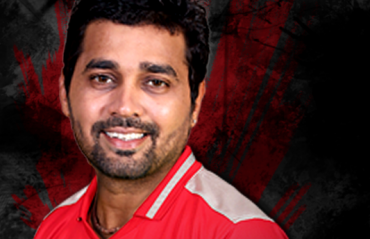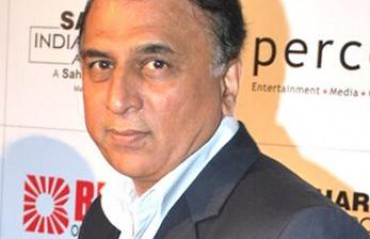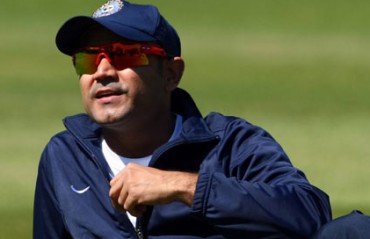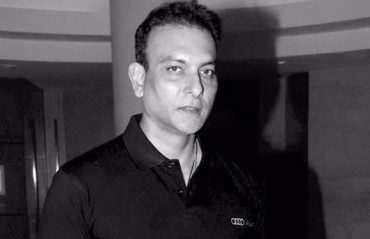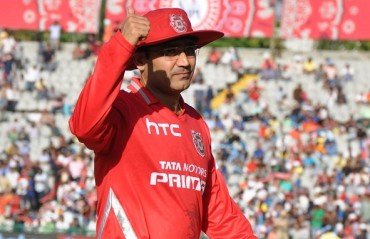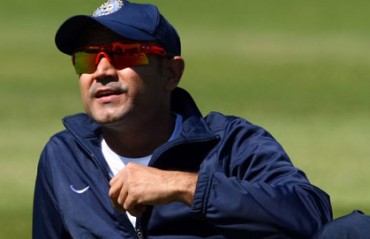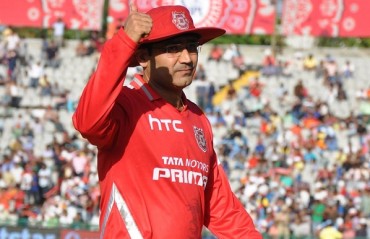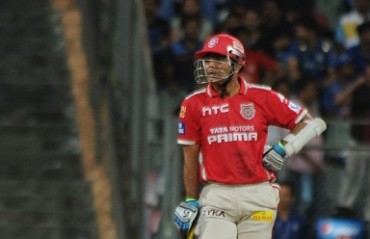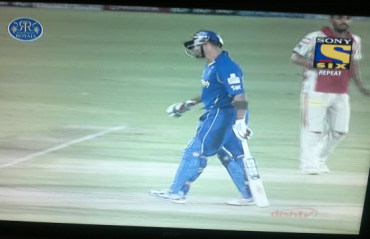Mujhe dar nahi tha out hone ka: The unflustered child who thought in 4s & 6s
- By Vidula Menge
- October 21, 2015
WHETHER IT WAS a first-ball six that devastated the bowlers or a crisp cover drive without moving his feet, the sheer happiness of watching Virender Sehwag bat is incomparable. It is the childlike innocence of the 'Nawab' that we're going to miss in Indian cricket.
Growing up in the early 2000s was a different experience altogether. It was an era when India produced some of its finest cricketers. Sehwag was one of those rare gems who changed the face of Indian cricket, without changing much about himself. Once upon a time, conventional opening batting was all about settling in, playing on the defensive and anchoring the innings from one end. Obviously, Viru begged to differ.
Carefree, destructive, fearless. For him, attack was the best form of defence. See the ball, hit the ball, forget the ball. If it was a bad delivery, it would be dispatched for a biggie. If it was a good delivery, it would still touch the boundary ropes. If it was an excellent delivery, it might just be the one that got him. But he showed no regret. The expression on his face -- priceless. Did he care who the bowler was? No. Did he care about his own score? No. If a shot is there for the taking, he will take it. It doesn't matter if it gets him to his triple hundred or sends him back to the pavilion (195 vs Australia, Melbourne, 2003 -- Sehwag moves from 189 to 195 with a six, attempts one more six and gets caught). He will stand there as if nothing happened. Undeterred, unmoved.
Numbers are not the biggest tellers of his contribution to Indian cricket, in comparison to a Sachin or a Dravid. Though, two triple centuries in Tests and the only Indian to do so, a double hundred in ODIs, a Test average of nearly 50 and a strike rate of 80-plus in Tests and 104 in ODIs says a thing or two about the destruction he caused at the crease. There was a method to his madness. He was often criticized for his poor footwork, but he was blessed with a hand-eye co-ordination that made up for his other shortcomings. He didn't follow technique as much as he followed his instinct, but Sehwag had got the basics of batting right, and everything else was just an improvisation. Still head, eye on the ball, and out came a shot that would leave fans gasping for more with dropped jaws.
The last two lines of his retirement letter aptly describe the phenomenon that Sehwag was.
"I also want to thank everyone for all the cricketing advice given to me over the years and apologise for not accepting most of it! I had a reason for not following it: I did it my way!"
What was his way?
Sehwag was capable of seeing the lighter side of things in a tense situation. Back in 2003-04 in Multan, when Pakistani bowler Shoaib Akhtar couldn't stop sledging him, Sehwag turned to the close-in fielders and asked,
"Yeh bowling kar raha hai ya bheekh maang raha hai? [Is he bowling or begging?]"
Did anyone have an answer for that? No. Funny, yes.
It was only Sehwag who could take advice from the great Sachin Tendulkar and not follow it, despite Sachin's warning that said,
"If you try to hit a six, I will hit you on the bum."
Of course, he went ahead with the six to get to his triple ton and mercilessly ended Saqlain Mushtaq's Test career.
"When I was on 295 and a hit a six to reach my 300, mujhme dar nahi tha out hone ka [I was not afraid of getting out]," Sehwag told Rediff's Faisal Shariff in an interview after the epic 309.
Sehwag is brutally honest about himself. He always did what he said.
"I was batting on 291 at Chepauk, against South Africa. I told Paul Harris: 'Come round the wicket and first ball I'll hit you for a six.' He accepted my challenge and the very first ball I hit him for a straight six, and there was a long-off, long-on, deep midwicket and a deep point. I was so tired and he was bowling on the pads and I was getting bored. So rather than spending 10-15 minutes to get to the triple-century I gave him good advice."
Sehwag is straightforward. He would speak his heart out, and it wouldn't bother him if it hits the other person hard. This anecdote on Geoffrey Boycott, who referred to Sehwag as 'talented but brainless':
"Boycott can say what he wants. He once batted the whole day and hit just one four."
For Sehwag, every ball deserves to be hit... in fours and sixes. This anecdote on him by former captain Sourav Ganguly is the perfect description:
"The best way to know how Virender Sehwag's mind works is to sit next to him in the players' balcony when India are batting. Every few minutes he will clutch his head and yell, "Chauka gaya" or "Chhakka gaya". That's his way of expressing disappointment at somebody's failure to take advantage of a ball that he thought deserved to be hit for four or six. That's how he thinks, in fours and sixes."
Sehwag made opponents chop and change their strategy. The fear of bowling to him alone would delay the opponents' declaration. This anecdote by frustrated Aussie wicketkeeper Time Paine explains why exactly Sehwag was a menace. Paine scored 92 0ff 196 balls, while Sehwag made 59 off 54 balls on the same pitch at Mohali, 2010-11.
"It's very frustrating, especially after you have batted the way I did, making it look hard for five hours, and then he comes out and smacks it everywhere."
Childhood is all about having fun. It is probably the best phase of a person's life, one that is missed and remembered at every stage, and one that will never come back. Sehwag's batting was a semblance of childhood, he made batting look fun, it will be remembered, and it will never come back. The unadulterated joy of watching him wield his willow, the no-mercy avatar hidden behind that charming smile.
Thank you, Virender Sehwag!
TFG NEWSLETTER: Exclusive and Stimulating articles delivered Free into your Inbox every day! Subscribe to TFG TIMEs









